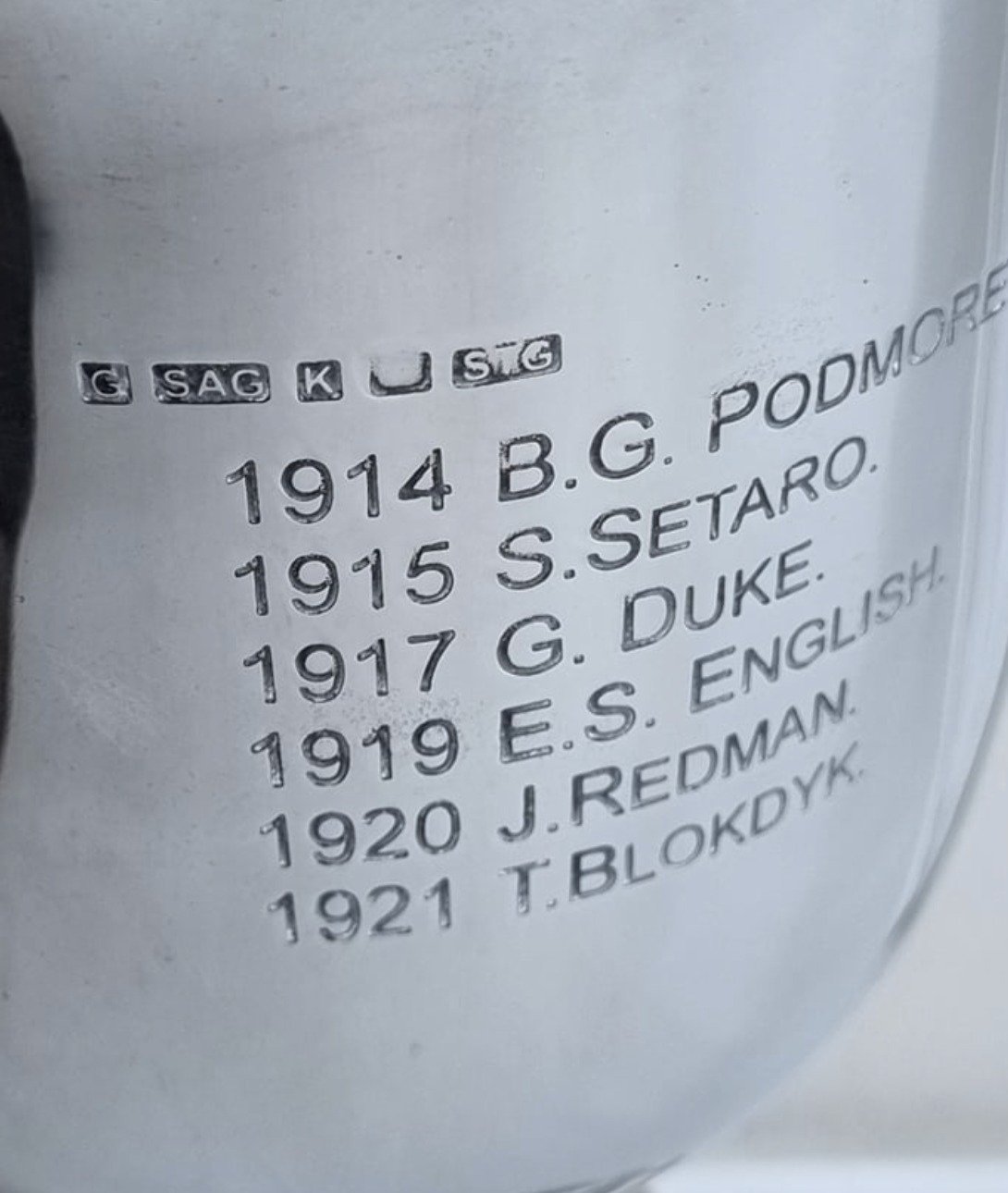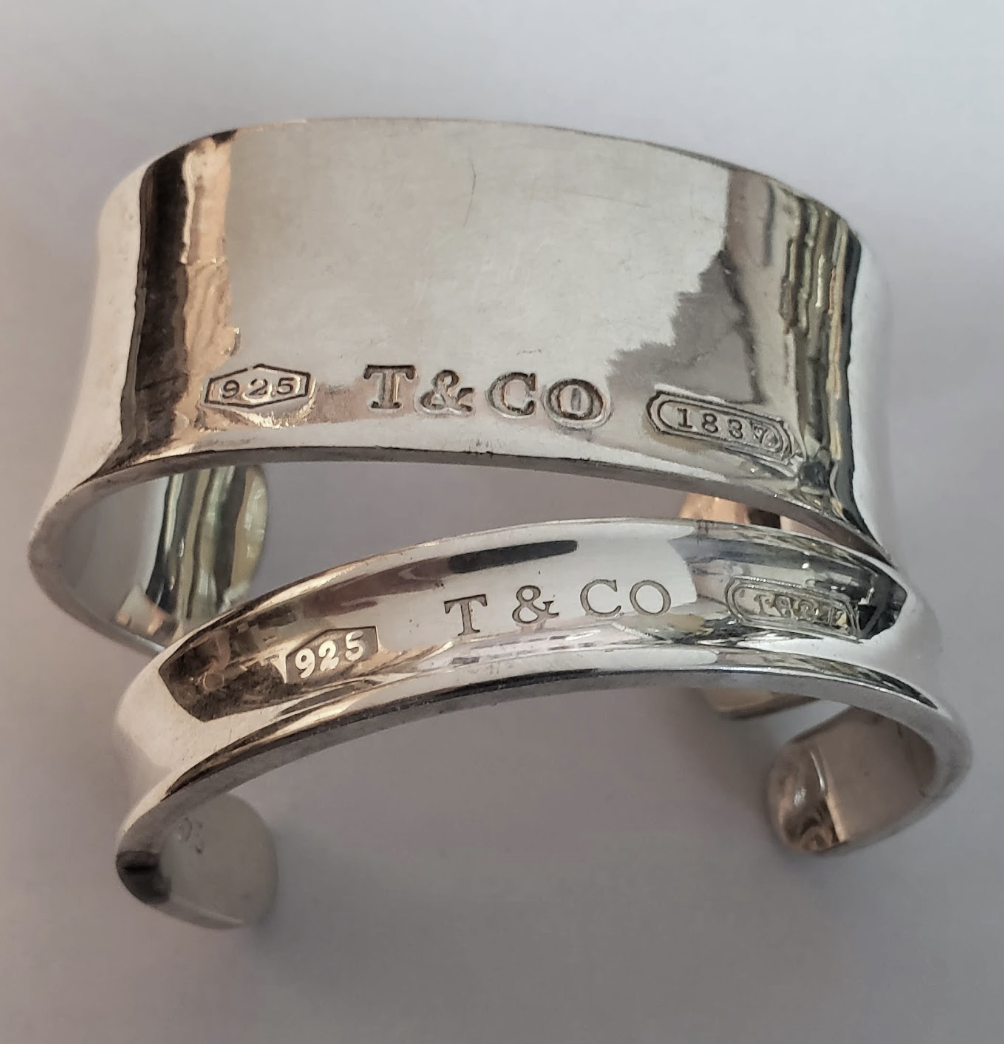I wanted to write today about something that happens from time to time to dealers-- even with pretty sharp eyes. Fakes. The fact is that almost all dealers have bought fakes. You won't see that many articles, because it's embarrassing and dealers think telling people about screw ups might hurt the reputation. The fact is, publishing these images may help others who are about to get burned or who will remember these examples in the future. Have a good image of a fake? Send it along and I will add it to this post.
 |
| Fake 1736 Spanish 8 Escudo |
I keep fakes so that I can use them to remind myself of the mistakes and to motivate me to learn. Some of these are actually quite common while others may be new to even a moderately experienced dealer. I learn as I go, so I am not an expert and the items I will describe aren't exhaustive of fakes.
The first example comes from a church flea market sale in a bad neighborhood. I bought a jumble of a keychain from a lady that seemed to know very little about jewelry. I purchased a couple of sterling silver Taxco bracelets and this keychain in a $40 lot.
 |
| Fake Chinese Medallion with Dragon and Phoenix |
 |
| Fake 14K Hallmark |

 The Chinese and Peruvians aren't the only ones to fake things for tourists on vacation (in fact there are scammers around the globe). Fakes show up in particular genres very frequently. Sports memorabilia, purses, shoes, and sunglasses have the highest number of counterfeits of any. Jewelry is actually not that commonly faked. Mostly because in person, it's easy to detect counterfeit gold and why bother with silver. There are easier ways to make a living. This piece is probably from Mexico. Yes, it looks a bit thuggish, but you'd be amazed at some of the items I've found in gold that you would think-- woah, who would make this stupid item out of gold? But they frequently do. It pays to buy tacky garbage sometimes. I bought this piece for $12 online. The seller clearly stated they believed it was a fake. Look, sometimes people make mistakes and I thought it was worth the gamble. This piece is heavy (like 15 grams+). And, an acid test was not conclusive. I took it to my jeweler and he puzzled over it, believing it was real. But after a few tests, he came to the same conclusion as me saying, "I think this is not real". I took it to a second jeweler just to be on the safe side and yes, confirmed it was fake.
The Chinese and Peruvians aren't the only ones to fake things for tourists on vacation (in fact there are scammers around the globe). Fakes show up in particular genres very frequently. Sports memorabilia, purses, shoes, and sunglasses have the highest number of counterfeits of any. Jewelry is actually not that commonly faked. Mostly because in person, it's easy to detect counterfeit gold and why bother with silver. There are easier ways to make a living. This piece is probably from Mexico. Yes, it looks a bit thuggish, but you'd be amazed at some of the items I've found in gold that you would think-- woah, who would make this stupid item out of gold? But they frequently do. It pays to buy tacky garbage sometimes. I bought this piece for $12 online. The seller clearly stated they believed it was a fake. Look, sometimes people make mistakes and I thought it was worth the gamble. This piece is heavy (like 15 grams+). And, an acid test was not conclusive. I took it to my jeweler and he puzzled over it, believing it was real. But after a few tests, he came to the same conclusion as me saying, "I think this is not real". I took it to a second jeweler just to be on the safe side and yes, confirmed it was fake.A few more examples of Mexican fake silver are the bangle bracelets that were sold in Mexico in recent decades (image below). They are all marked for sterling silver, but it only takes a momentary scan to see the failure of the silver plate with brass showing through.
 One more thing. Salvador Dali etchings that are sometimes real may have no real value. Some, such as the Don Quixote print here were printed in the tens of thousands in so-called "open editions". The frame may be more valuable than the paper and I would recommend against buying Salvador Dali prints unless you really know what you're doing. The market is simply flooded with these items. There are also many many Dali prints with forged signatures. If a print says "AP" on it or "EA", the signature is almost always faked and added later by an unscrupulous dealer. So be very wary of these supposed artist proofs.
One more thing. Salvador Dali etchings that are sometimes real may have no real value. Some, such as the Don Quixote print here were printed in the tens of thousands in so-called "open editions". The frame may be more valuable than the paper and I would recommend against buying Salvador Dali prints unless you really know what you're doing. The market is simply flooded with these items. There are also many many Dali prints with forged signatures. If a print says "AP" on it or "EA", the signature is almost always faked and added later by an unscrupulous dealer. So be very wary of these supposed artist proofs. |
| Fake Chinese Brooch Hallmarked 'China Silver'. Note the base metal showing through in the left hand image. |
 |
| Spurious 'Russian' Marks |
Speaking of enamels, perhaps it is Russia that is known more for its enamel and silver work than any other country in the world. Unfortunately, much or even most of the silver in the secondary market that purports to be Russian silver is faked and is usually from another Eastern European country like Bulgaria. The marks are often crude representations of the official government marks of Russia. That said, there is sometimes aesthetic value in these pieces and as long as you aren't paying Faberge prices, it can be worth picking up these items. They are frequently made of solid silver just with spurious marks and lower quality craftsmanship. Seen here is such an example in a silver and enamel . It is solid silver and it is fairly well executed-- though not nearly so well as the ones it purports to be. A piece like this can best be characterized as a forgery.
 |
| Autobahngold |
 |
| Autobahngold Ring |
Recently, a crop of silver trophies has cropped up in online sales that were made to deceive. These trophies, purportedly of South African origin commemorating motorcycle racing and other similar ventures. These pieces bear false South African silver hallmarks. These items are large, heavy, and flashy. And most importantly cheap at the size. The photos (courtesy of Joseph Arj Chapman) are not usually high quality in the listings, but under close scrutiny, something is definitely off! For all that size and weight, these are certainly not worth acquiring. The names are names like Setaro, Duke, English, Redman, and Blokdyk and dates of 1914, 1915, 1917, 1919, 1920, and 1921. No doubt, this motorcycle trophy exists somewhere on the desk of a forger, but certainly with so many listings floating around at the online marketplaces, you should be clear that these are fakes.
Let's start at the marks. The 'STG' mark is well known and shows up in Australia, South Africa and other locations. In the United States and Europe, it isn't that common but it does get seen. But look carefully and you can see that the mark is a cast of an original. Note the weakness of the letter impressions and the poor quality of the letter backgrounds.
The worst is the pseudo coat of arms whose engraving is extremely weak. And it's poorly drawn to boot. Look at the total lack of detail. In all fairness, you could not tell this level of detail from the original online listing, but with a good clear photo, you know. This is not how silver is decorated. Not how silver is marked. And of course, yes, it is a forgery and made to deceive.
Thanks to astute California dealer Hank Friedman, we've got some nice examples of fake chrome plated Tiffany cuff bracelets. You can really see that base metal coming out at the back!
Happy hunting and may all that glitters for you be gold. Want to see some stuff that didn't turn out to be fake? Check out the shop here for beautiful gold and silver jewelry.







Comments
Post a Comment